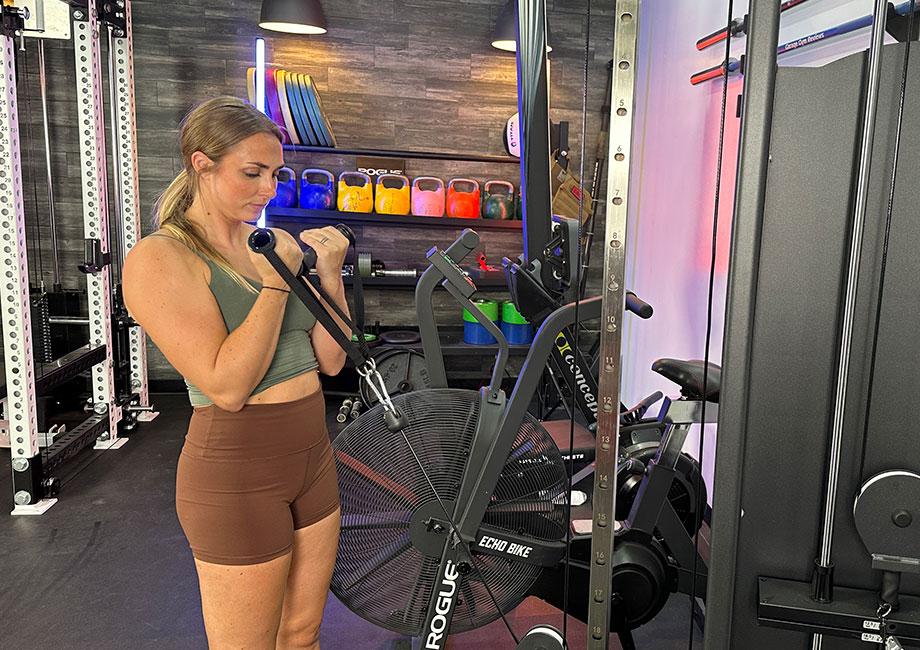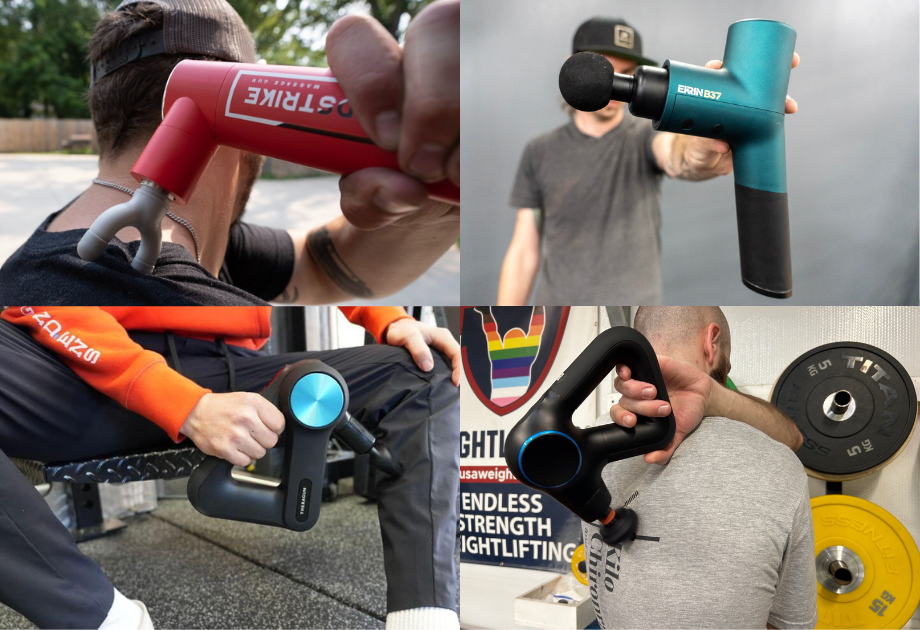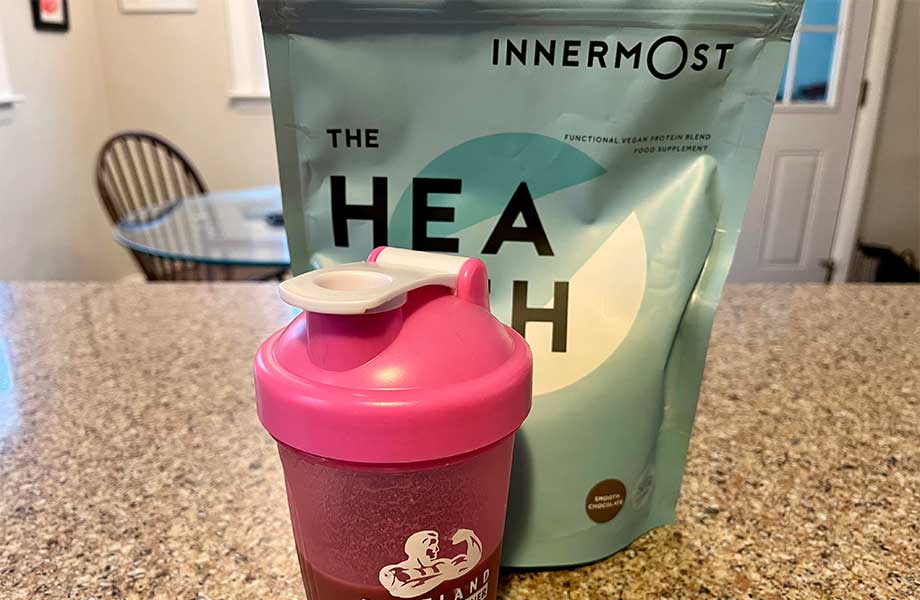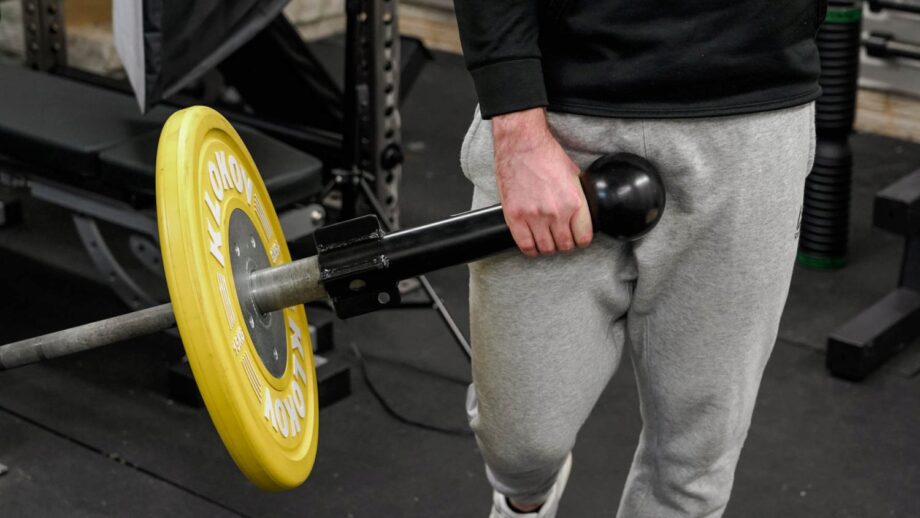You’re in the gym, and now it’s time to hit your biceps. You’ll likely grab a barbell or a pair of dumbbells and do some curls. After this, you may move on to the machines for a cable biceps workout. Great! There are several fantastic cable exercises for your biceps, but the most popular is the cable biceps curl.
Although the cable biceps curl may look simple—based on my 10 years of experience as a fitness enthusiast and certified personal trainer (CPT)—I often see it done incorrectly. I aim to show you how to do the exercise with the proper form, and give you modifications, variations, and alternatives to try. To finish, I’ll describe three benefits of adding the cable biceps curl to your arm day routine.
Ready to build the biceps peaks of your dreams? Let’s lift!
How To Do the Cable Biceps Curl
You’ll need access to a cable machine with a straight-bar attachment to do the cable biceps curl below. Choose a challenging weight, but at the same time, the weight shouldn’t be so heavy you can’t lift the bar up and lower back down in a controlled manner.
RELATED: Best Cable Machines For Home Gyms
How to do it:
- Set the pulley on one side of a cable machine to its lowest position.
- Add a straight bar attachment and select your desired weight.
- Stand upright near the bar, facing the cable machine. You’ll want your feet to be shoulder-width apart.
- Squat down to grab the bar with an underhand grip (palms facing the ceiling). Then, stand up so the bar is at your pelvic region.
- Retract your shoulder blades, lift your chest up, and brace your core.
- Curl the bar toward your shoulders, ensuring your elbows are tucked in.
- Pause momentarily, then reverse the motion so the bar returns to its original position.
- Continue for the desired number of repetitions.
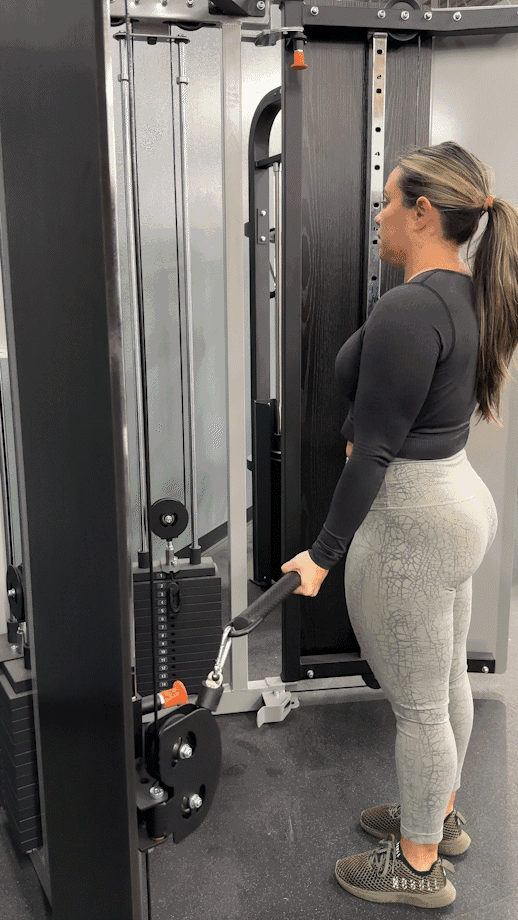
Modifications
- Dial it back: Decrease the load or sit on a flat bench. The latter provides more stability during the exercise.
- Make it harder: Perform more reps or increase the weight. Alternatively, try some of our cable biceps curl variations below.
How To Do the Cable Biceps Curls At Home
There are still options if you don’t have a cable machine at home. We have a step-by-step guide for making a DIY pulley system, which you can use for biceps curls and other strength training exercises. Similarly, you can mimic the resistance of a pulley machine by using a resistance band (I’ll explain how to do this in the exercise alternatives section below).
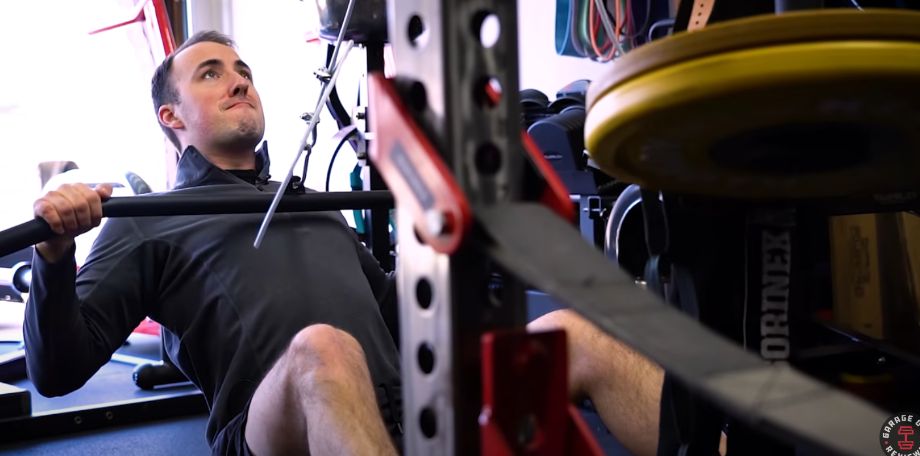
Cable Biceps Curl Variations
Below are three cable biceps curl variations that you can do on a cable machine:
Cable Hammer Curl
Instead of a straight bar attachment, use a rope attachment. Because of the neutral grip (palms facing each other), this places more emphasis on the long head of the biceps.
RELATED: 7 Great Long Head Biceps Exercises
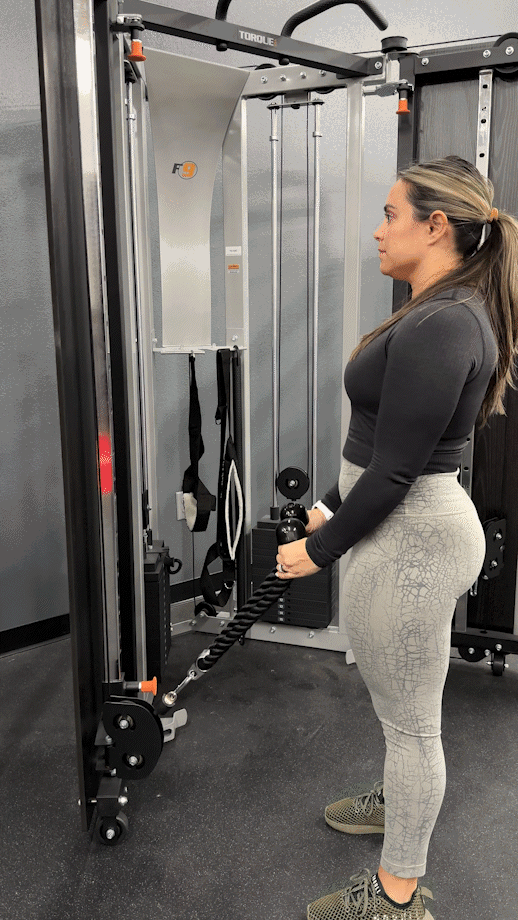
Cable Reverse Curl
With this biceps cable curl, you’ll still need a straight bar attachment. However, rather than grasping the bar with an underhand grip, you’ll use an overhand grip (palms facing the floor). This activates your brachioradialis and brachialis muscles—as well as your wrist flexors—to a greater degree.
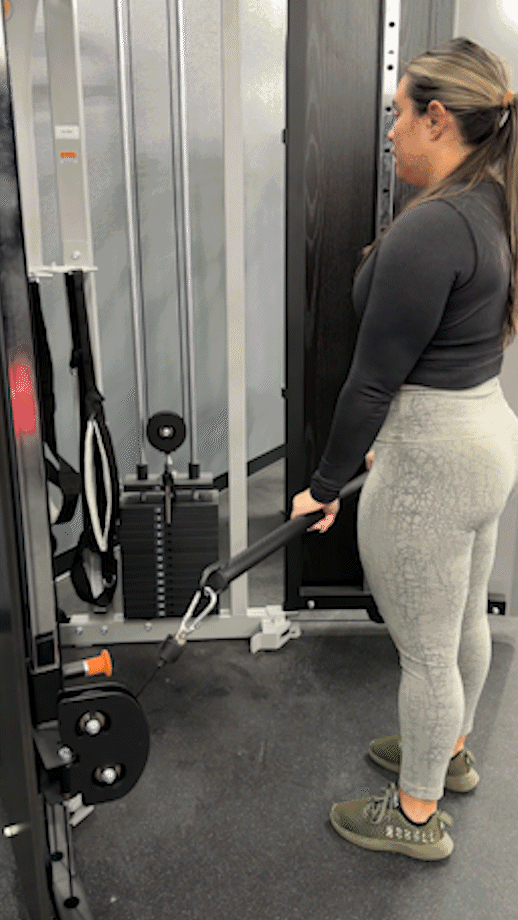
Single-Arm Cable Curl
Want to correct muscular imbalances and address bilateral deficits1? Perform a single-arm cable curl. You’ll need a D-handle attachment for this exercise. Do a complete set with one arm before switching to the opposite arm.
RELATED: Unilateral Exercises
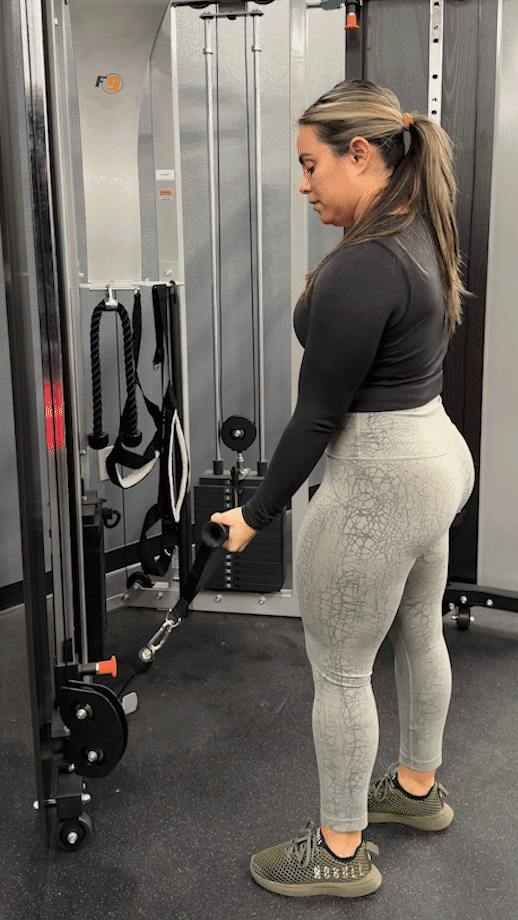
Cable Biceps Curl Alternatives
The cable biceps curl is a fantastic addition to any arm workout. However, other arm exercises can also help you to build bigger biceps. Try some or all of the following cable biceps curl alternatives to see which you enjoy:
Banded Biceps Curl
Why do it: I love banded biceps curls because all you need is a single resistance band. The downside to the cable biceps curl is needing a cable machine, which most of us don’t have at home. With the banded alternative, you can work your biceps from anywhere. Also, if you have a set of bands, you can progress the exercise.
How to do it:
- Stand tall with your feet hip-width apart.
- Step onto one of the best resistance bands with both feet.
- Hold the other side of the band with both hands. You’ll want your arms to be down by your sides with your palms facing away from you.
- Engage your core and lift your chest up.
- Bend your elbows so your arms move toward your shoulders.
- Hold, then return your arms back to the starting position.
- Repeat for reps.
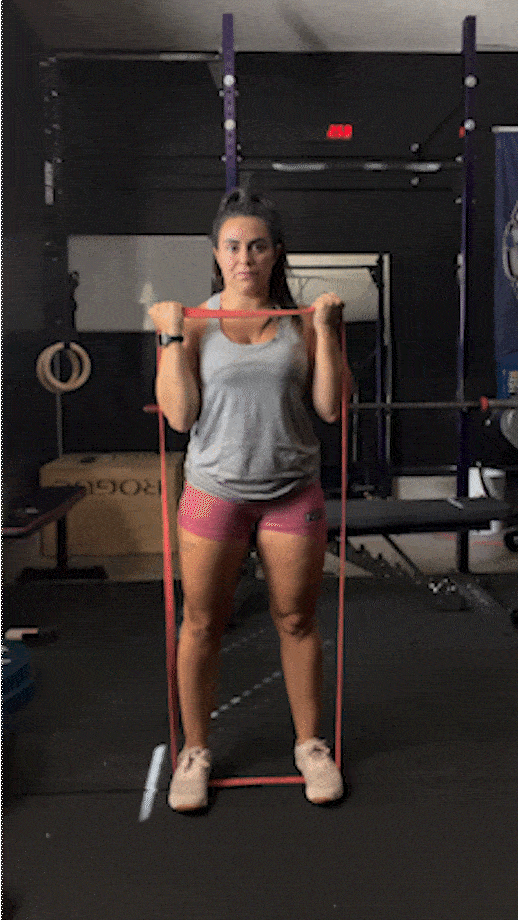
Preacher Curl
Why do it: Preacher curls have a few extra benefits compared to the cable biceps curl. First, there’s less stress on your elbow and shoulder joints because of the angle of the preacher bench. Also, because you’re sitting down with your arms fixed, it’s harder for you to cheat on your reps, which may lead to bigger biceps in the long term.
How to do it:
- Adjust the height of a preacher bench so that your elbows and triceps are flat and comfortable against the padding. If you don’t have a preacher bench, set an adjustable bench to a 45 to 60-degree angle.
- Add the required weight plates to an EZ bar (or barbell, dumbbells, or cable).
- Grab the bar with an underhand grip (palms facing the ceiling). You’ll want your arms to be fully extended in the starting position.
- Curl the weight toward your shoulders.
- Pause momentarily at the top of the movement before lowering the bar back down.
- Keep going for repetitions.
Expert tip: Although I’ve described how to do preacher curls using an EZ bar above, you can also do them on the cables. A 2020 International Journal of Environmental Research and Public Health2 study found that using both cables and free weights can produce similar results in terms of hypertrophy (but the barbell is better for gains in muscular strength).
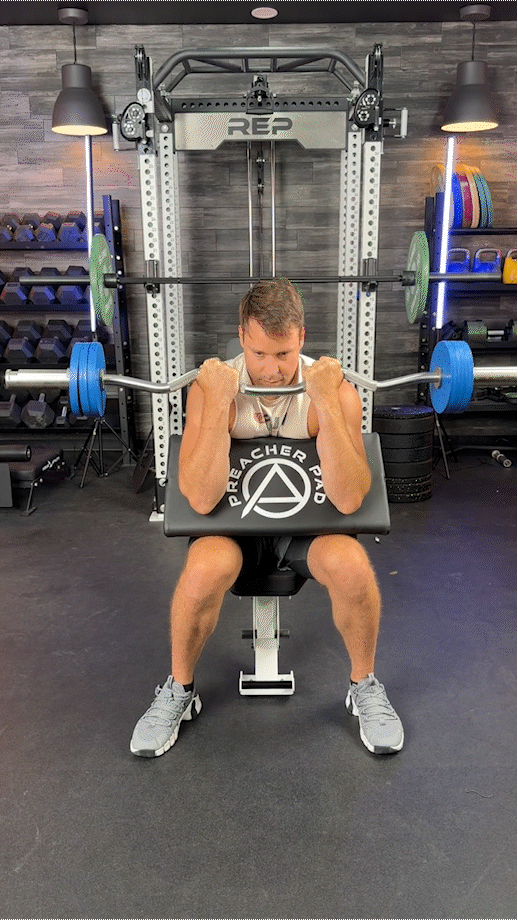
Barbell Curl
Why do it: The standard barbell curl only requires a barbell and weight plates, which are less expensive than a cable machine. As well as working your biceps, you’ll improve your grip and forearm strength, helping with other strength training exercises. You’ll likely be able to load some serious weight to the bar (at least in comparison to other biceps exercises).
How to do it:
- Stand upright with your feet shoulder-width apart, chest raised, and core activated.
- Hold a loaded barbell with an underhand grip (palms facing away from you). In the starting position, your arms should be straight, and the barbell should be at your pelvic region.
- Squeeze the bar, then curl it up toward your shoulders.
- Pause, then lower the bar back down to its original position in a controlled manner.
- Repeat for reps.
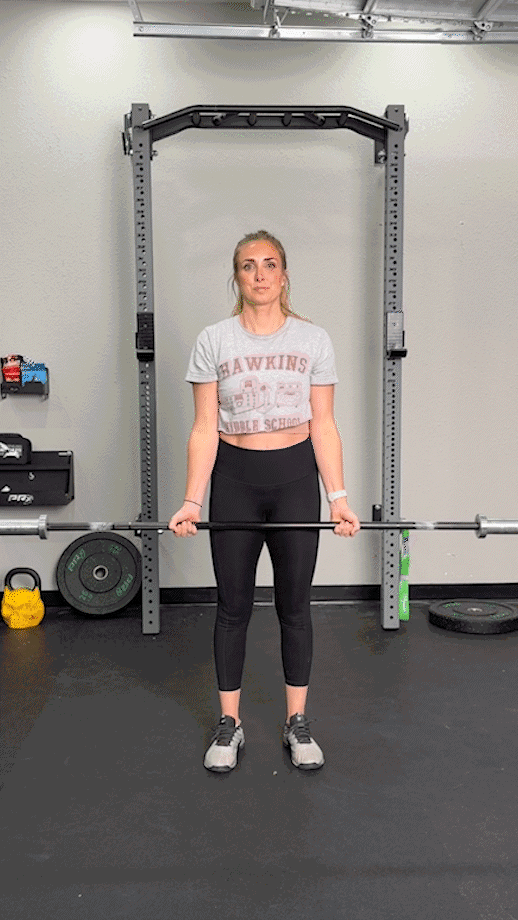
Spider Curl
Why do it: With spider curls, you can use a barbell, EZ bar, or a pair of dumbbells, making it an extremely versatile exercise. However, the main benefit is that spider curls isolate the biceps more than the cable biceps curl because you’re stabilized against a bench rather than standing upright.
How to do it:
- Set an adjustable bench to a 45 to 60-degree angle.
- Place your chest, core, and quads against the bench. You’ll want your feet to be flat on the floor, and your head peeking over the top of the bench.
- Grab a loaded barbell, EZ bar, or a pair of dumbbells with an underhand grip (palms facing away from you). Your arms should be straight and positioned at the back of the bench.
- Bend your elbows to curl the weight towards your shoulders. Hold momentarily.
- Extend your elbows slowly to return the weight to its starting position.
- Repeat for the desired number of repetitions.
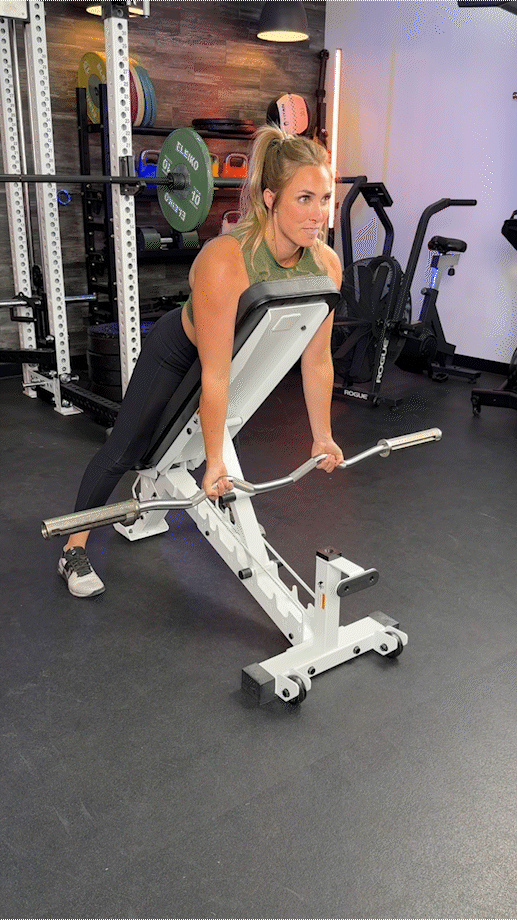
Benefits of the Cable Biceps Curl
Why should you include the cable biceps curl in your best biceps workout? This curl variation can help build bigger biceps, may be safer for certain lifters, and gives your biceps constant tension throughout the entire range of motion. Here’s more:
Helps Build Bigger Biceps Muscles
When people think of bodybuilding exercises for the biceps, they usually call out barbell curls, hammer curls, dumbbell bicep curls, and chin-ups. However, a 2014 Ace Fitness3 study found that cable curls came joint-second (tied with chin-ups) for muscle activation of the biceps during various exercises. Yes, that means no more judging lifters training their biceps on the cables!
RELATED: What Muscles Do Chin-Ups Work?
May Be Safer For Certain Lifters
Beginners to weight training or those with pre-existing injuries may prefer using the cables over free weights to target their biceps. Even if this isn’t you, you may be concerned about getting injured in the long term. I enjoy doing biceps exercises with free weights, but after a heavy back day, I prefer using the cables. The cable biceps curl is actually one of my go-to exercises.
Gives Constant Tension to Your Biceps
The difference between training with free weights (such as barbells and dumbbells) and a cable machine is that the latter provides constant tension to your muscles throughout the entire range of motion. Even at a lower intensity and load, you can get similar hypertrophy benefits with a cable machine than with free weights.
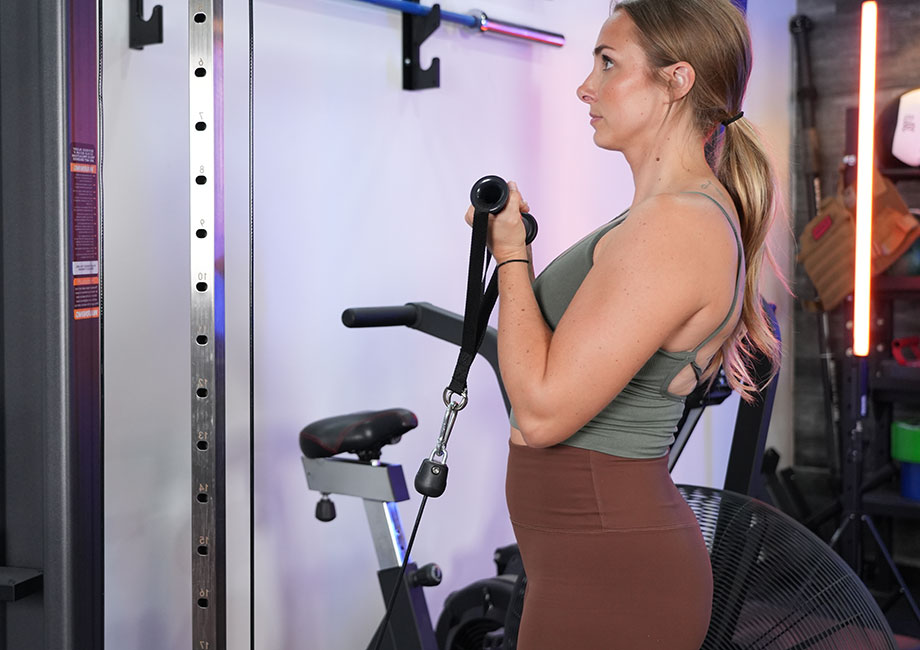
RELATED: Cable Arm Workouts
Common Cable Biceps Curl Mistakes
Although the cable biceps curl looks simple at first sight, there’s more to it. Here are three common cable biceps curl mistakes I see clients make and how you can avoid them:
Not Tucking Your Elbows In
Keeping your elbows tucked into your body during the cable biceps curl focuses solely on your biceps (and not other muscle groups in your upper body). Another benefit of not flaring your elbows is that you’re less likely to get injured. Elbow strain is common during bicep exercises, so do your best to avoid them by tucking your elbows in. Performing biceps stretches before you do cable biceps curls can help to increase your flexibility and improve your lifts.
Not Using the Full Range Of Motion
With the cable biceps curl, the bar needs to get as close to your shoulders as possible. On the way down, fully extend your arms so you don’t miss out on potential gains. One of the main reasons why lifters can’t get the full range of motion is because the weight is too heavy, so lower it if this is the case.
Lowering the Bar Too Quickly
Both lifting the bar (concentric) and lowering the bar (eccentric) phases of the cable biceps curl should be done slowly. I often see the former done slowly and the latter rushed. Both phases are equally important. If you’re finding this difficult, the weight is likely too heavy. Reduce it and focus on the mind-muscle connection4.
Muscles Worked By The Cable Biceps Curl
You guessed it—the main muscle group activated during the cable biceps curl is the biceps (or the biceps brachii). However, it also hits the brachioradialis and the brachialis. See below for a full breakdown:
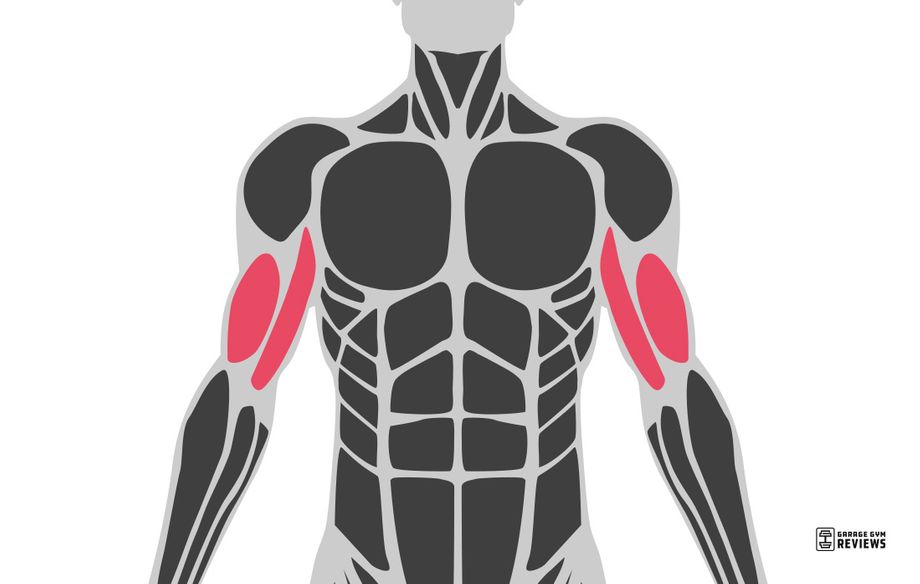
- Biceps brachii: The biceps brachii is made up of two heads (long head and short head), and this muscle is a forearm flexor when extended but becomes the forearm’s most powerful supinator when flexed5.
- Brachioradialis: The brachioradialis primarily acts as an elbow flexor6. The muscle is active during elbow flexion, whether the forearm is supinated, neutral, or pronated6.
- Brachialis: The brachialis is one of the largest elbow flexors and provides pure flexion of the forearm at the elbow7.
Cable Biceps Curl: Final Thoughts
Although the cable biceps curl isn’t as popular as other biceps exercises, it should be. It came joint second (with the chin-up) in a 2014 Ace Fitness3 study for muscle activation of the biceps during various exercises. Cable biceps curls may be safer for certain lifters, and the cables provide constant tension on the biceps throughout the entire range of motion.
When doing the cable biceps curl, remember to tuck your elbows in, lower the bar slowly, and use the full range of motion. Before doing any resistance exercise, warm up with cardio and dynamic exercises to avoid injury.
Cable Biceps Curl: FAQs
What’s the best form for cable biceps curls?
For cable biceps curls, begin by standing tall with a raised chest, your core engaged, and your shoulder blades retracted. Your feet should be firmly planted on the floor, shoulder-width apart. Then, you’ll want to lift the bar towards your shoulders, tucking your elbows in as you do so. It’s important to lift and lower the bar slowly to make the most out of the exercise.
Are cable biceps curls effective?
Yes, cable biceps curls are effective. I appreciate that they’re not as popular as other bicep exercises—e.g., barbell curls or hammer curls—but I’ve been doing this isolation exercise since I started training over 10 years ago. A 2014 Ace Fitness3 study agrees, finding that only concentration curls are better than cable biceps curls for biceps muscle activation.
Are cable curls better than hammer curls?
Both cable curls and hammer curls work the muscles in your upper arms. However, hammer curls employ a neutral grip, whereas cable curls use an underhand grip. Because of this, hammer curls are better for hitting the long head of the biceps, and cable curls are superior for activating the short head. I suggest incorporating both exercises into your arm day training routine.
References
- Škarabot J, Cronin N, Strojnik V, Avela J. Bilateral deficit in maximal force production. Eur J Appl Physiol. 2016 Dec;116(11-12):2057-2084. doi: 10.1007/s00421-016-3458-z. Epub 2016 Aug 31. PMID: 27582260.
- Nunes JP, Jacinto JL, Ribeiro AS, Mayhew JL, Nakamura M, Capel DMG, Santos LR, Santos L, Cyrino ES, Aguiar AF. Placing Greater Torque at Shorter or Longer Muscle Lengths? Effects of Cable vs. Barbell Preacher Curl Training on Muscular Strength and Hypertrophy in Young Adults. Int J Environ Res Public Health. 2020 Aug 13;17(16):5859. doi: 10.3390/ijerph17165859. PMID: 32823490; PMCID: PMC7460162.
- Young, M.S., S., Porcari, Ph.D., J. P., Camic, Ph.D., C., Kovacs, Ph.D., A.; Foster, Ph.D., C. Ace Study Reveals Best Biceps Exercises. ACE. ProSource™: August 2014
- Calatayud J, Vinstrup J, Jakobsen MD, Sundstrup E, Brandt M, Jay K, Colado JC, Andersen LL. Importance of mind-muscle connection during progressive resistance training. Eur J Appl Physiol. 2016 Mar;116(3):527-33. doi: 10.1007/s00421-015-3305-7. Epub 2015 Dec 23. PMID: 26700744.
- Tiwana MS, Charlick M, Varacallo M. Anatomy, Shoulder and Upper Limb, Biceps Muscle. [Updated 2024 Jan 30]. In: StatPearls [Internet]. Treasure Island (FL): StatPearls Publishing; 2024 Jan-. Available from: https://www.ncbi.nlm.nih.gov/books/NBK519538/
- Lung BE, Ekblad J, Bisogno M. Anatomy, Shoulder and Upper Limb, Forearm Brachioradialis Muscle. [Updated 2024 Jan 30]. In: StatPearls [Internet]. Treasure Island (FL): StatPearls Publishing; 2024 Jan-. Available from: https://www.ncbi.nlm.nih.gov/books/NBK526110/
- Plantz MA, Bordoni B. Anatomy, Shoulder and Upper Limb, Brachialis Muscle. [Updated 2023 Feb 21]. In: StatPearls [Internet]. Treasure Island (FL): StatPearls Publishing; 2024 Jan-. Available from: https://www.ncbi.nlm.nih.gov/books/NBK551630/


